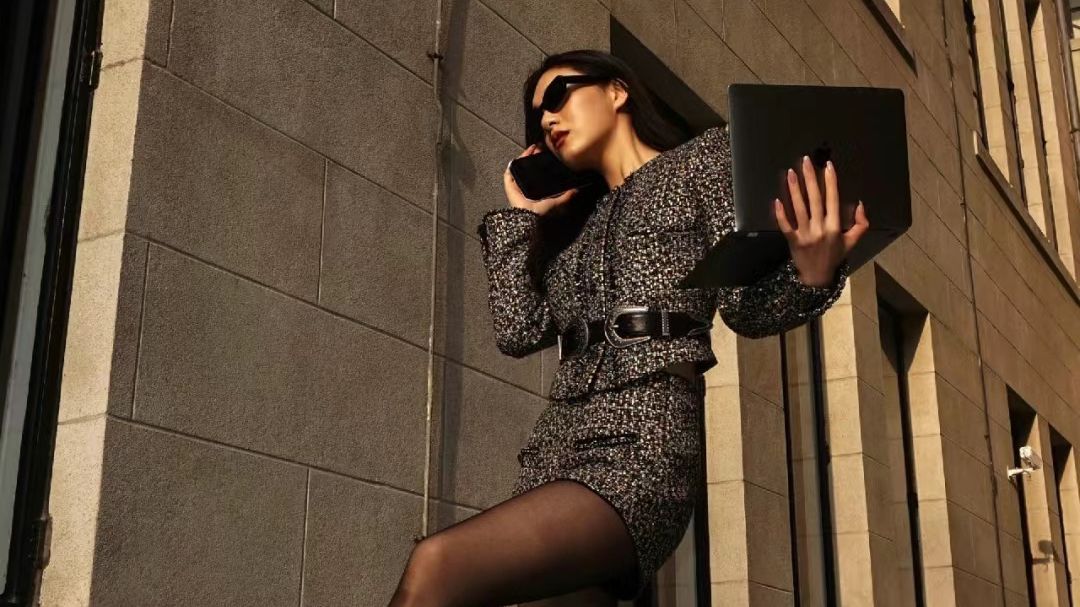Y2K trend is up with a vengeance — this time, office edition.
Inspired by 1990s and 2000s workwear, the “office alarm” pattern comprises strong pencil skirts, fitted blazers, tailored trousers, and provocatively unfastened blouses, complemented by stylish glasses and hair pulled back into a smooth bun.
Popularized on TikTok in late 2023, this aesthetic has made its way to Chinese lifestyle platform Xiaohongshu, where the hashtag “office siren” ( #职场海妖风 ) has amassed over 27 million views. Many fashionistas save these seductive clothing for the roads rather than wearing them on the go.

The office siren style strikes a harmonious balance between beauty and wisdom, allowing for the coexistence of sophistication and intellectuality, according to Xiaohongshu user Fashion Editorial Department ( @fashion ).
The cosmetic is a glorification of organizational culture because many young Chinese are just beginning to experience workplace life.
More than ever, it is a vision of a strong person working at the office with a caffeine in one side and her phone in the other, and living the dream life they have typically seen in films and common dramas, says Anas Bournonville, chairman of French-Chinese advertising agency Reverse Group.
According to Bournonville, Frey, a company that specializes in personalized suit for women, has seen its views rise on Xiaohongshu in recent months thanks to viral videos showing women working in sophisticated and comfy suits.
But in reality, many people — particularly those well- accustomed to office life — could n’t be bothered to dress up. International media has been covering the “gross outfits” Chinese people are wearing to work over the past month.
When Douyin person @Kendou S posted a of herself in February 2024 wearing fur boots, corduroy pajama tops, and a shirt dress to operate, it went viral with over 1.4 million shares. Since then, the hashtag “gross work outfits” ( #上班恶心穿搭 ) has garnered over 44 million views on Xiaohongshu, with netizens rolling up to the office in sleepwear, hoodies, and socks with sandals — much to their bosses ‘ chagrin.

These unconventional outfit choices, in addition to being cozy, reflect a sluggishness among Chinese youth at work.
According to Dao Ngyuen, founder of Essenzia ByDao, a boutique marketing creative strategy agency,” this way of dressing — or rather non-dressing — to go to the office is really driven by the new and changing attitude toward work.” ” Beyond comfort, it has to do with pushing back society’s expectations and going their own way. They not only reject 996, but they’re not afraid to be vocal about it.
It’s just as Xiaohongshu user Xiaozhang’s Commentary ( @小张评大学生版 ),” Behind this self- deprecation undoubtedly lies the work dilemma faced by most young people today: too much work, little pay, long hours. Faced with these difficulties, we prefer to get an extra 30 minutes of sleep in the morning rather than put effort into dressing up.
Another Xiaohongshu user said,” I can only wear the ugliest clothes to match my pitiful salary.”
Some employees even went so far as to share photos of their physical condition before and after they started their jobs, highlighting the physical strain it has placed on them. Numerous internet users claim to have put on weight or that their appearance has grown older as a result of stress and practice.
Naturally, these are two extremes of office fashion. Everyday work attire is what you’d expect: comfortable and largely streetwear, observes Elsbeth van Paridon, an editorial consultant at Beijing Review and founder of fashion site, The China Temper.
” You have the oversized hoodies, the baseball caps, but you will definitely also see how]young workers ] infuse daily wear for comfort with stylish nods. They do incorporate elements from the time, she says, citing examples of how women would wear brown to a brown outfit from the previous year.
Still, that does n’t mean luxury and fashion brands ca n’t benefit from the aforementioned micro trends. When it comes to the office siren aesthetic, recent collections by Sandy Liang, Mark Gong, and Zara all feature alluring corporate looks. Farfetch has also been active in promoting the aesthetic on Weibo, highlighting high-end items that would fit the bill.

According to Bournonville,” The fashion trends on Xiaohongshu and and other Chinese platforms now have a direct impact on the products and brand sales, which Western brands have to follow on a daily basis to stay relevant in the local market.”
Luxury brands would do well to pay attention to the “gross outfit” trend because it illustrates how Chinese youth embrace trends on their terms, Ngyuen says.
” Brands need to revise the way they create engagement, top- down communication is n’t as engaging as before. Besides, as youngsters want to be in command, not taught nor preached, the market is getting more and more atomized. Therefore, brands will need to define their offer and communication in a more specific and personalized way, she says.
Whether it’s mismatched pajamas or sexy skirt suits, mocking or romanticizing, Chinese workers are using their clothes to make a statement about work. These micro fashion trends, while transient, serve as a portal in the psyche of China’s Gen Z and millennials.

